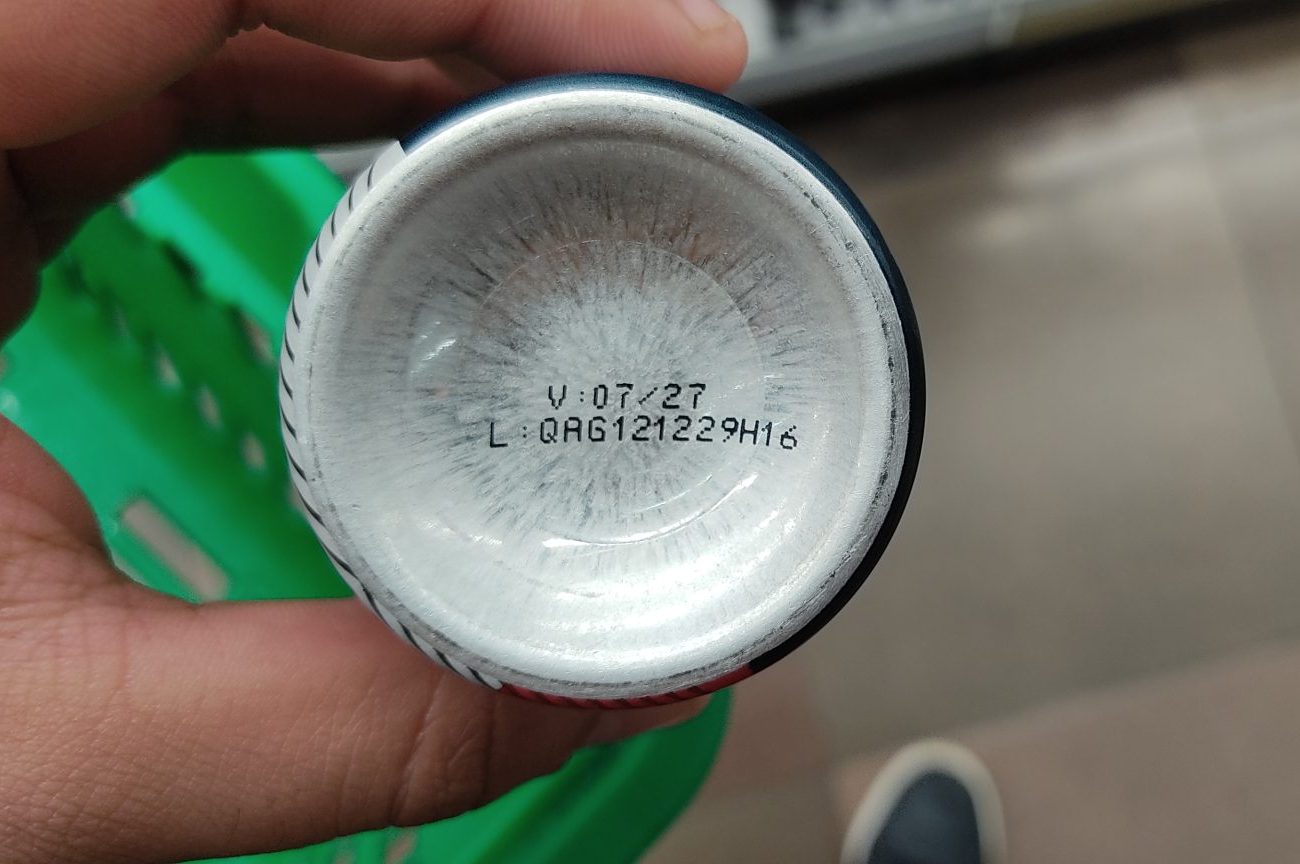Save This Recipe
If you’ve ever found yourself staring at a can of beans or a box of cereal and tossing it out just because the date on the package has come and gone, you’re in good company. Maybe you did it and instantly felt that little prickle of guilt. Or maybe you didn’t give it a second thought—because hey, if the date says it’s time, it must be time…right?
Well…not quite.
Here’s the scoop: those “Best By,” “Best Before,” and “Sell By” dates? They aren’t expiration dates—not in the way we usually assume. Once you know what those mysterious dates actually stand for, you might see your pantry (and your grocery receipts) in a whole new, brighter light.
‘Best By’ Is Not a Deadline
Let’s set the record straight: “Best By” and “Best Before” dates are more gentle suggestions than ironclad rules. They’re all about quality, not food safety.
So, if you’ve got a bag of rice that says “Best Before: March 2024” and here it is April already…that doesn’t automatically mean it’s gone off or is even close to unsafe. It just means the folks who made it can’t promise it will taste or look exactly the way they intended after that date. That’s it—no food-police involved.
Here’s an easy cheat sheet for what those dates really mean:
-
Best By / Best Before: These are the “best flavor, best texture, best color” dates. After the date, the food might not taste quite as fresh or vibrant, but it is almost always still good to eat. Think of it as a little heads-up, not a warning siren.
-
Sell By: This one isn’t even for us as shoppers! It’s a note to grocery stores on how long they should keep something out on the shelves. It says nothing about whether food is safe after that day.
-
Use By: Okay, this one’s a little more serious, but even so, it’s mainly about peak quality. The only time it’s legally a safety deadline is infant formula—that is one date you do want to follow closely. Otherwise, it’s still usually a guide to the best taste and texture.
Even the USDA admits it: “if the date passes during home storage, a product should still be safe and wholesome if handled properly.” So, about those cans of green beans leftover from last summer? Odds are, they’re perfectly fine (and yes, I’ve eaten my fair share of “expired” canned corn, no regrets!).
Why We Fall for the Date Trap
Honestly, part of the reason we get tripped up by all these food dates is that they look so…official. You see that stamp and it feels like a ticking clock—like the food’s about to turn into a science experiment the moment the clock strikes midnight.
But there’s a little more to it than just the date.
Let’s face it, we all get a little jumpy when it comes to food safety. Nobody wants to gamble with getting sick, and with all the ads on TV telling us “freshest is best,” we get a little trigger-happy with the trash can. We’ve been trained, thanks to good old marketing, to look at “Best Before” dates as a “throw-away-after-this” command. I blame the shiny new grocery displays just as much as anyone, but we get it in our heads that it’s easier—and safer—to toss something than to actually inspect if it’s still good.
And, if I’m being honest, brands and stores know exactly how to play into our worries, too. Empty shelves give them a reason to restock and for us to re-spend. “Better safe than sorry,” we tell ourselves, even if it’s really just about not having to bother too much.
When Dates Do Matter
Now, don’t get me wrong—there are foods where tossing them after the date really is the wise thing to do (no one wants to mess around and find out with certain foods, believe me).
Things like deli meats, soft cheeses, anything super fresh like juice or dairy products—especially once you’ve opened them—can pick up bacteria beyond a certain point. That date, along with how long it’s been popping open and shut in your fridge, is something you’ll want to pay attention to with these.
Your nose knows! If something smells off, or the texture is funky (think curdled milk or slimy turkey slices), or the color is headed into weird territory, trust that instinct. Most of the time, your senses can pick up on “not right” long before a date can.
But for all that pantry stuff—dry pasta, crackers, rice, boxed snacks, cans galore—the date is much less about safety and way more about just tasting their best. Don’t let an old date boss you around with those.
Canned Food: The Misunderstood Hero
Alright, let’s show some love to canned goods, shall we? They’re the unsung heroes of my kitchen (and probably yours, too), and honestly, they get way too much flak.
A can of beans or tomatoes that’s sealed and stored well can last for years after the “Best By” date. Yes, years! We’re talking two to five, easily—sometimes even longer—if you’ve kept them someplace cool and dry (my dark basement is packed, ask me how I know). During World War II, some canned foods held strong for decades and were still edible. That’s staying power.
The trick? Canned food is vacuum-sealed and heated to kill bacteria. As long as your can looks right—no rust, no dents, definitely no bulging—you’re almost always in the clear.
Signs it’s not okay:
-
The can has puffed up or looks bloated.
-
You hear a weird hiss when you open it (trust me, you’ll know if it’s not a good sound!).
-
You see rust, leaking, or it smells off and gross.
If you run into any of those, into the trash it goes—no debate there. But don’t let a plain old date talk you out of a good can of peaches or beans.
A Quick Pantry Check: What Really Lasts?
Let’s clear up a few surprises in the old “how long does this actually last?” department:
-
White rice: Believe it or not, this can last up to 30 years (yes, really!) if you keep it sealed up and out of the heat.
-
Dry pasta: Good for at least a year or two past the date, sometimes more if you kept it dry.
-
Flour: About 6–12 months (and longer if you stash it in the freezer—my flour hangs out happily in there).
-
Cooking oils: Still good for 6–12 months after you open them. You’ll notice if they go rancid, trust me.
-
Spices: These guys are safe for literally years. They will lose oomph, but unless there’s mold or it smells weird, you’re golden.
-
Cereal and crackers: These can be good even months past the date; maybe they’re a tad stale, but that’s about it. Nothing a little oven crisp-up can’t fix if you’re determined.
The big trick? Keep things airtight and away from humidity and heat. That’s the best recipe for keeping things fresh for as long as possible.
The Real Cost of Getting It Wrong
This part stings: In the U.S., we throw away about 30–40% of our food supply every single year. And a huge part of that waste is thanks to misunderstandings about those little dates stamped on the packaging.
Just think about it—oodles of perfectly edible food going straight to the landfill, all while families are trying to stretch their dollars at the grocery store. And let’s not forget, landfills are no friend to the planet or our wallets.
Most families throw out over $1,800 a year in edible food, simply because of confusion about these dates. That’s not just wasteful, it’s a chunk of change I’d much rather spend on something fun. Or even just on good coffee (because, well, priorities).
Understanding these dates isn’t just being savvy, it’s also about being a good steward—of our budgets, our resources, and our earth, too.
So… What Should You Do Instead?
Let’s not overcomplicate things. Here’s my keep-it-simple plan:
-
Use your senses. Give it a good look, a sniff, maybe a touch (with clean hands). If it looks, smells, and feels as you’d expect, chances are it’s fine.
-
Store food better. Airtight containers, cool and dark shelves, and proper sealing make a bigger difference than you’d think. Your pantry will thank you (and so will future you).
-
Rotate your pantry. Put the new groceries behind the old ones. It’s the classic “first in, first out” advice—and it works like a charm at home.
-
Don’t freak out. If you bite into a slightly soft cracker, the world’s not ending. At worst, it’s just a little less crispy than we’d like. (I’ve definitely re-crisped crackers in the oven. Zero shame.)
Bottom line: treat that “Best By” as a gentle nudge, not a danger sign. Let yourself be the judge—not just a date on a box.
Final Thoughts: Maybe Keep the Can After All
We’ve all been taught to look at date labels as a big danger sign. But nine times out of ten, that little number is about the best taste, not your safety.
So, the next time you’re peeking into your pantry and see that old can of lentils or a bag of flour from last spring? Give it a little sniff and a check. Trust your instincts—they’re smarter than any paint-stamped date.
You might just end up skipping a grocery run, saving a bit of cash, and—best of all—keeping that food-waste guilt at bay.
And honestly? That’s the kind of kitchen win I’ll take any day.

